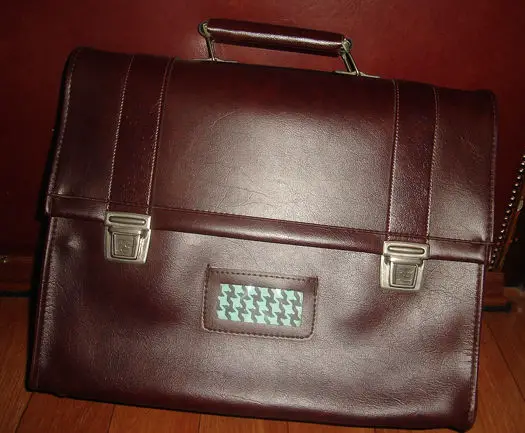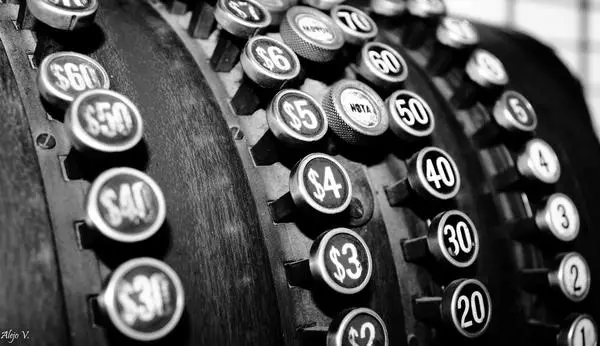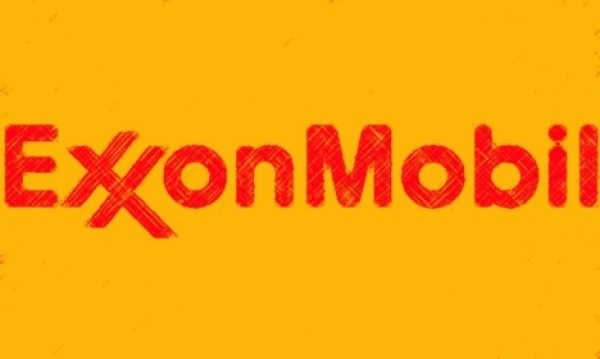Dividend Growth Investing & Retirement is supported by its readers through donations and affiliate links. If you purchase through a link on my site, I may earn a commission. Thanks! Learn more.
One of the reasons I started this blog was to educate others and to improve my own investing. This is why I like to keep my readers up to date on my portfolio changes. For the most up to date portfolio changes follow my twitter account as I will usually tweet first and then follow-up with a blog post. By keeping an open book of my portfolio and changes to it, I hope to generate discussion so others can see how I put my investing philosophy into practice.
With my recent purchases and sale of Kinder Morgan Inc. [KMI Trend Analysis] I would say that I have not put this philosophy to good use. I first purchased Kinder Morgan Inc. on November 6, 2015 for $25.50 (8% dividend yield at the time) and then again on December 1, 2015 for $22.66 (9% dividend yield at the time) which reduced my average price to $24.04. Just a week later on December 8, 2015 Kinder Morgan Inc. announced that they were cutting the dividend and I sold all the shares for $14.75 per share in the after hours market. Pretty awful returns overall, as I managed to lose 38.6% in roughly a month. Thankfully I didn’t own too much as the shares I purchased represented roughly 2.5% of my portfolio. Still this kind of loss hurts, especially when it could have been avoided if I had listened to my own advice! Instead I got greedy, went yield chasing and was a little naive to trust management’s dividend growth estimates of 6-10% for the next few years.
First lets take a look at why I initially invested:
- Long dividend streak – Kinder Morgan Inc. merged with a few other partnerships in 2014 and only became a company that traded on the stock market in 2011. Prior to that people invested in the partnerships. When you looked at the dividend streak of the partnerships and Kinder Morgan Inc. together it was something like 17 years in a row. (Going from memory here, so this might be a little off)
- Wide moat – Kinder Morgan is the largest energy infrastructure company in North America. They are a pipeline company and collect a pretty steady stream of cash flows. Morningstar rates them a wide moat stock.
- Shareholder interests aligned with management – Richard Kinder the founder of the company owns more than 10% of the company and when he was the CEO he collected an annual salary of $1. The rest of his compensation came from the dividend on the shares he owned.
- High dividend yield with growth – I bought shares at the 8% and 9% dividend yield levels. The shares had just dropped because management was estimating 10% dividend growth per year until 2020, but lowered their estimates to 6-10% per year. This sounded fine to me. I could start with a very high dividend yield and expect 6 to 10% dividend growth each year.
You can see from the points above that we have some strong characteristics of a good dividend growth stock, but we are missing a few key points, namely the financial strength of the company and the dividend sustainability.
Related article: Financial Strength: A Key Element in High Quality Dividend Growth Stocks
Where I went wrong:
- Not financially strong – When I invested in Kinder Morgan Inc. I looked at an old Valueline report which rated them a B++ for financial strength which was above the B+ minimum rating for financial strength I look for. S&P had given them a BBB- credit rating at the time I invested, and I typically want to see BBB+ or higher. Rather than going with the more conservative BBB- S&P rating and deciding not to invest because the company wasn’t financially strong and didn’t meet my BBB+ or higher requirement, I justified the purchase. My justification at the time was that the company had just increased their dividend (usually a good sign) and their cash flows were stable because of the toll like nature of a pipeline business and they were expected to grow.
- Dividend Sustainability/Payout Ratio – Kinder Morgan’s payout ratio based on earnings per share was above 100%, but they focus on distributable cash flow (DCF) as opposed to earnings per share stating that “Distributable cash flow before certain items is a significant metric used by us and by external users of our financial statements, such as investors, research analysts, commercial banks and others, to compare basic cash flows generated by us to the cash dividends we expect to pay our shareholders on an ongoing basis.“ Even the payout ratio based on DCF was close to 100% which didn’t leave the company with much money left over for business growth and ultimately one of reasons why they cut the dividend.
To fund growth in the past Kinder Morgan Inc. would use debt or sell more shares to raise the capital required for its growth initiatives. When oil prices dragged the industry down the stock price dropped making it more expensive to raise money through share issuance. Because they were already rated BBB- any more significant debt would have meant a lowering to junk grade from investment grade. When they increased their ownership stake in a company with a lot debt , one of the ratings agencies put them on watch and the company was forced to act in order to protect its investment grade status. With issuing more shares or debt effectively off the table they chose to cut the dividend 75% and use the excess cash flow to fund business growth.
When Kinder Morgan Inc cut their dividend I sold immediately per my selling criteria.
Related article: In What Conditions Would I Consider Selling A Stock?
Lessons learned
There are three main lessons I have learned from this investment. The first and most important is that financial strength should be a deal breaker for me. My investing horizon is long term and ideally I’d like to hold on to my investments forever as I collect an increasing stream of dividend income. I should only be investing in financially strong companies that can survive long term AND continue to increase the dividend. This starts with a financially strong company. This is something that I already know, but I ignored my own advice, went yield chasing and hoped that it would be OK. Hope is not a good investing strategy! Before buying shares I should have looked at the credit rating of BBB- and not invested because it wasn’t at BBB+ or higher.
The second lesson is that I should not rely on what others (management in this case) say when the numbers don’t make sense. The payout ratio based on DCF was quite high so the annual dividend growth of 6-10% that management was forecasting was not sustainable based on these high payout ratios.
The third and last lesson is that when dividend yields get very high (8% and above) they are usually at a greater risk of a dividend cut.
No one is perfect, and I’m sure I’ll make mistakes in the future, but in the meantime I hope to learn from this investment and move on. Hopefully if I can stick to my plan I can limit these mistakes. I know Kinder Morgan Inc. used to be a dividend growth darling, so I’m curious to hear if any of my readers were caught unaware with Kinder Morgan? Even if you didn’t invest in Kinder Morgan Inc., I’d like to hear of your past investing mistakes and what you learned from them.
Newsletter Sign-Up & Bonus

Have you enjoyed our content?
Then subscribe to our newsletter and you'll be emailed more great content from Dividend Growth Investing & Retirement (DGI&R).
BONUS: Subscribe today and you'll be emailed the most recent version of the Canadian Dividend All-Star List (CDASL).
The CDASL is an excel spreadsheet with an abundance of useful dividend screening information on Canadian companies that have increased their dividend for five or more years in a row.
The CDASL is one of the most popular resources that DGI&R offers so don't miss out!








Very well written and lessons will be learned all along the way. We all learn from our mistakes, learning from them and keep growing makes men sucessful
Also I think, I also follow you on twitter did you tweet about kinder Morgan purchase in November ?
Just checked my twitter account. I tweeted the Nov purchase on Nov 6th: https://twitter.com/dgiandr/status/662640513196027904
stellar post, esp. lessons learned! Thanks for sharing your pain in the humble way presented.
Very good mea culpa. I could write a similar related to “high yield bonds”. I would add that a 8% div yield is a warning sign when the company is highly leveraged and payout ratio is 100% or more. Like HY bonds, a high dividend is not from cash flow … it is a liquidation of capital.
The simple truth is high dividend yields a often “too good to be true”. Resist that temptation. If for example, JNJ pays a 2 % div that is growing at 5% and the payout ratio low, the risk of holding this stock long term is pretty low. But why play with fire. KMI was always a big risk and crashing oil prices and high leverage caught up with them.
My mistake was to invest in stocks that went down. Will Rogers advised investors to buy only stocks that go up. I ignored this advice on occasion.
But seriously, folks, the one piece of advice I always follow is not to try to catch a falling knife. The factors that caused a stock to decline over a few months are not going to disappear just when you buy the stock. Kinder Morgan had been declining for months before the purchases in November and December 2015.
If the stock looks good, but is declining, put it on a watch list and buy when it starts to rise convincingly. “Convincingly” is open to discussion, but I use a MACD (100/200 with smoothing of 20 periods ) to tell me when the uptrend is a sustainable one. Yes, you miss some of the upside, but you also miss a lot of the downside by not buying prematurely.
Hi there, thanks for the post it’s an interesting read.
I’m not so experienced an investor myself.
But KMIs fundamentals seemed to be weak for quite a long time. Even during the cyclical peak of oil they were not very conservative with their balance sheet. I would not disqualify this company based on dividend yield. I would disqualify it based on balance sheet. In my experience poor balance sheets lead to dividend cuts, not high yields.
Thoughts?
I agree and that was the main lesson learned in the article. When I talk about wanting a strong financial strength this is another way of saying that I don’t want a poor balance sheet. I think the emphasis should be placed on financial strength, but I do think a high dividend yield can be an indicator for an upcoming cut.
I applaud your maturity in owning up to your mistakes publicly – you have only improved your brand, in my view.
I’ve bypassed some of the stocks that you’ve bought in the past, and the high payout ratio might have been the reason I took a pass on this one. I wish I had posted something at the time – I typically hold my tongue, for fear of being wrong. Maybe my comment might have helped. I suppose it proves that the more people are engaged in commenting on this blog, the better for all of us.
Having said this, none of us are perfect. I’m watching one of my holdings at the moment (BBL) and fear it might become a KMI. Ugh! I like Len’s comments above and might try his method for avoiding these falling knives in future.
Keep up the good work.
Good tip to stress the importance of evaluating a balance sheet before making a purchase. My father asked me to look into Crescent Point for him when it was trading at $27/per share. I took one look at the statements and saw the ballooning debt, the lack of cash, the payout ratio well over 100% and told him to stay away.
For the bolder types out there it could be a good shorting strategy. Look at stocks paying high, unsustainable dividends with a bad financial position and bet on them to fail.
For the record, we don’t own any KMI, and we realize that most dividend investors consider a dividend cut’s a sin and sell the shares, but is this a smart move?
There is something to be said for holding on to the shares and wait for recovery before selling, or even keeping as the dividend may very well be increased once more? When you sell, you materialized a loss, holding on at least gives you the opportunity for capital gains (or a reduced loss)? Plus, if the yield was 8-9%, a drop of 75% in dividend would still give 2-2.25% yield, which is not great, but better than nothing 😉 That’s our view anyways.
As for mistakes, yeah, NewAlta. Bought too soon and just before a dividend cut. Sound familiar? We did not sell though!
To each there own. Your strategy sounds nice, but typically when a stock cuts its dividend it doesn’t perform that well especially within the first year of the dividend cut. Obviously their are exceptions to the rule, but I don’t know how to figure out which stocks are the exception (Can’t predict the future). I also like selling after a dividend cut because a dividend cut is a negative indication that the company isn’t doing well. It also reduces the risk of my investment going to zero due to bankruptcy. Typically a company will cut the dividend well before getting to a bankruptcy stage. I’m not saying that a dividend cut leads to bankruptcy, and ideally I’m investing in companies that don’t go bankrupt, but you never know. In Kinder Morgan’s case the argument could be made that the dividend cut made them more financially strong.
My investment plan involves investing in dividend GROWTH stocks, so when a dividend is cut it no longer meets my investment plan, so I sell it. I’m not saying this is the best strategy, but it works with my plan, so I plan to stick with it for now. It can be difficult to sell a stock at a loss, but I choose to bite the bullet.
Hey DGI&R, we don’t mean to judge but were just very curious about your thoughts. So thanks for your feedback! Good point thou about the dividend GROWTH stocks, we agree that this is likely the most successful approach. It just sucks that you have to earn a long winning streak with solid stocks to earn back the losses you made on selling KMI, we wish you well!
There are some dividend growth stocks that issue inconsistent dividends, such as Gluskin Sheff. On an annual basis the dividends increase consistently, but quarterly they go up and down. So in this case I would not panic if the company decreased its dividend in a given quarter or two. In the case where the financial strength of the company is ebbing, a cut in the dividend would be alarming, and I would sell.
The cockroach theory says that for every roach you see (e.g. the first dividend cut) there are thousands you don’t see. So sell before they make their presence known.
What I’d love to know is this: are there any reliable signs that a company is GOING to cut its dividend, so you can sell before the cut (and before the consequent plunge in share value)?
A high payout ratio based on earnings and cash flow can be an indication, but I wouldn’t say it is as reliable as you’d want as some companies choose to stick it out through tough times.
Basically I’d love to know the answer to!
I think you would find it interesting to read David Van Knapp’s (of Sensiblestocks.com) article that he posted in the Dec 14 issue of Daily Trade Alert.
I had a look, your right it was an interesting read. Here’s the link for anyone else: http://dailytradealert.com/2015/12/14/i-just-sold-this-stock-5/
While I realize I am a little late to this topic, I just came across your note and wanted to respond. Unfortunately for me, not only was I heavily invested in KMI, due to my prior ownership in KMP, but I remain totally invested in KMI hoping that someday in the future I will become whole. My mistake was compounded by investing too much in one company thinking that even if the commodity tanked and became cheaper, it still would need to be transported through the pipelines. It s much too late to sell even at the price of $19 since my cost was at $38. The only lucky part is that I have 8 years before I retire and so many lessons learned the hard way. Presently, I invest in companies in diversified areas with yields at 3% and in very small amounts. At my age one would have thought I learned all the necessary lessons but there are still more to learn I fear.
ROHRSHACK